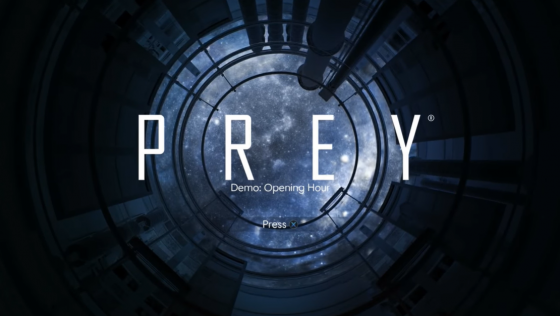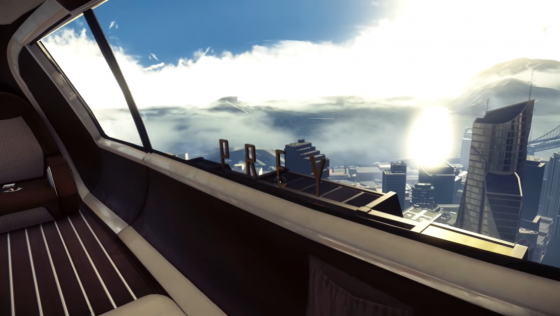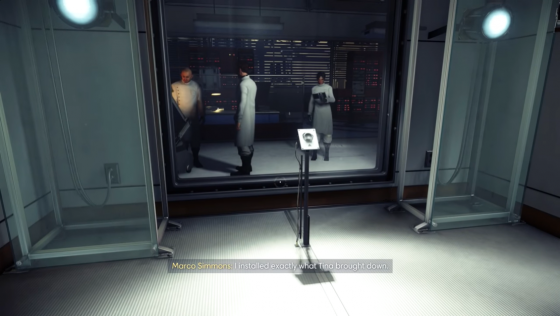
TheSixthAxis
 10th May 2017
10th May 2017
Prey
Prey's introduction is a masterful example of pulling the rug out from under the player, worthy of some of the best movies out of Hollywood. It's almost humorous in retrospect, as it lures you into one way of thinking before suddenly shifting gears, dropping you into a now almost desolate Talos I. All you have for company are two rival voices over a communicator and the mysterious and deadly Typhon aliens that now roam free.
You'd be forgiven for getting a fitting sense of deja vu from this set up, aping Bioshock's form in a lot of ways. January acts as your guide and pre-amnesia confidant, as Alex, Morgan Yu's brother, plays the misguided villain. That familiarity means that all the way through, you're waiting for the other shoe to drop in the game's mystery. While Bioshock is certainly one touchpoint, there's also an awful lot of Half-Life to the story and the way that other survivors come crawling out of the woodwork, many of whom have interesting stories and arcs for you to follow.
The Typhon come in all manner of terrifying shapes and sizes. The Mimics have easily become the most recognisable - if that makes sense, given their shapeshifting abilities - and even deep into the game, their flighty attacks and mimicry of inanimate objects give the game more than a few jump scares, some of which can even come just seconds apart, followed by frantic flailing with a wrench or wild gunfire.
More overtly ominous are the Phantoms, taking on tall, shadowy humanoid forms, capable of shadow stepping closer, unleashing elemental attacks and surrounding themselves in an aura that makes getting into shotgun range dangerous in its own right. They only grow and become more intimidating from there, with invisible enemies that throw you in the air, hulking floating blobs with telepathic or neuromancy abilities and worse. The station's own infrastructure and defences can be turned against you, as well.Almost regardless of the situation, you rarely feel on a level footing with the enemy in combat, and if they catch glimpse of you they will generally come to investigate, forcing you to back off and hide from their seemingly implacable advances. Rarely can you come away from a fight scot free, and they always take a toll on your resources.
That said, you gradually become a fearsome force to deal with. There's only a handful of guns, with the Gloo Gun and Q-Beam gun sat alongside a pistol and shotgun. The grenades are much more inventive, with the Recycler Grenade pulling in anything that's not nailed down in a showstopping visual effect and turning them into resource cubes, while the EMP and Typhon Lure are fairly self explanatory.
Augmenting your abilities are Neuromods that, injected as they are through Morgan's eyes, rewrite his or her memories to add new capabilities. Initially it's an aptitude for hacking, repairing, lifting and so on, but scanning Typhon aliens opens up new possibilities to take on the shapeshifting of the Mimics, the kinetic blasts of Phantoms, telekinesis of Poltergeists and more. They're entirely optional, and you can complete the game without a single Typhon ability.All of this makes Talos I a fantastic playground to explore. Every problem has multiple solutions, whether it's scouring the world for a post it note with a passcode on it or turning into a stapler to slide under the door. You can take the stairs, turn on the gravlift, or use the Gloo Gun to create little globs of glue as impromptu platforms up the elevator shaft. If your mind works that way, there's such potential to explore not just the world, but the game mechanics as well.
You're actively encouraged in this regard in a number of ways by the environmental design itself, but also more overtly pushed to delve into the station by the side quests. So much of daily life has been preserved in the panic of the Typhon outbreak, and there's quests that take you through someone's final days, uncovering smuggling rings, whistleblower efforts and more poignant moments of love and loss. The surviving crew also come to add to this, and your comms can become increasingly busy if you manage to help people out on your journey.
Playing on PlayStation 4 Pro, there's a degree of input lag that disrupts the first few hours playing the game. The full release has this to a lesser degree than the demo of the opening hour, but it still muddies the controls, leaving you feeling detached and giving them an overly floaty and imprecise feel, even if you can get used to it. Presumably it will be something Arkane can fix in short order, but there's also the lengthy area load times, a few hiccups with CryEngine loading in textures at times, the somewhat unappealing human character models, and the odd mystery glitch that I couldn't attribute to a Poltergeist Typhon...The games art style helps it to transcend some of these problems, with Talos I a fascinatingly decadent place to explore both inside and out - the space walks are very well implemented. The Art Deco stylings sit at odds with living in outer space, contrasting with the more workmanlike areas and the regular recycling and fabrication stations that have you scooping up everything in sight and turning it into something useful.
A more fundamental problem is the AI of some of the Typhon that can undercut their latent threat. The Nightmare in particular is stymied by dimwittedness, more than happy to sit and stare at a wall or tree instead of actively patrolling or hunting for you. It's disappointing that what is initially utterly terrifying can be undercut by simply sitting on the other side of a door for three minutes until it disappears, or defeated by popping out to attack.
In fact, with an initially wide and varied-seeming number of approaches, I gradually came to feel quite pigeonholed in my approach. Turrets, for example, could have led to fantastic instances of luring enemies into a trap to be gunned down in a hail of bullets. In practice, this rarely works, as the best laid plans are too easily disrupted by long range area of effect Typhon abilities, and I'm drawn back to attacking while trying to back away time and again.
Good Points
- Outstanding opening and psychological story
- Intense gameplay from sneaky and threatening Typhon aliens
- Great variety in weapons and abilities to suit your play style
- Multiple solutions to every problem
- Plenty of side missions alongside main story
Bad Points
- Some dimwitted AI dispels excellent atmosphere
- Often feel pigeonholed in combat situations
- Lengthy load times and occasional pop in
- Poor human models and their animation
Verdict
Writing over our memories of the Prey that preceded it, Arkane Studios' game is something new and yet strikingly familiar. There's a great deal of kinship to the likes of Bioshock, Half-Life and other classic games, but it's also broader and more expansive in what it tries to do. Regardless of its flaws and similarities, Prey manages to be an enthralling science fiction adventure.















